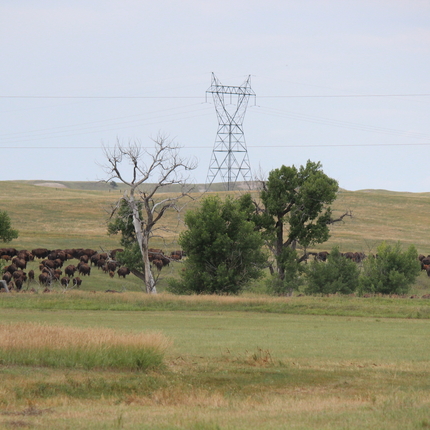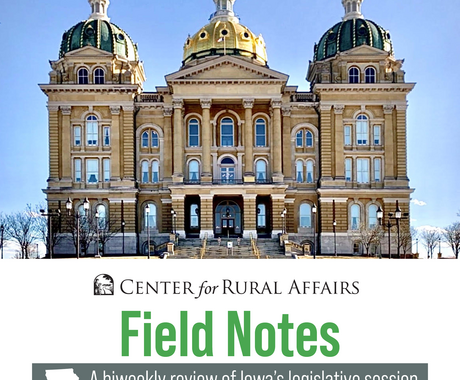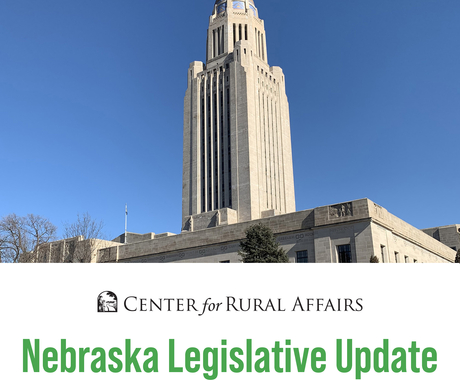Three development projects in Kansas, Wisconsin, and Minnesota show how states manage revenues and tax assessments from transmission lines in different ways.
Center for Rural Affairs policy associate, Katie Rock, and policy associate, Lu Nelsen, recently discussed these examples on the Rural Matters podcast with host John White. They also gave tips on how best to communicate with developers, as well as advice for community members on how they can educate themselves about development projects.
Benefits and opportunities
Tax revenue
In each state, revenue from transmission line development projects are used differently. Counties in each state choose how they utilize the revenue.
In Minnesota, revenue is used to decrease property taxes.
Wisconsin receives environmental impact fees. While different than tax revenue, $9 million has been distributed in three counties. The money is used for a variety of conservation and community improvement projects.
“Providing that choice allowed each county to tailor how they wanted to use that revenue, which is essential for small towns where there aren’t universal needs,” said Nelsen. “Every small town is different, and having that choice available allows you to make the best decision for your community.”
Education
Revenue from transmission projects in Kansas are tax exempt for the first 10 years. However, a small amount of revenue is collected through taxes assessed on substations, which was then shared with county agencies. The state legislature placed a cap on tax revenues that could go to schools, which became the focus of this example.
“The schools missed out on any tax revenue from this transmission development,” said Rock. “That's where these state policies impacted the revenues that could be spent at a local level.”
Job opportunities
Transmission line development brings in accessible jobs to rural areas. Community colleges and technical schools often offer training programs for this kind of work.
“Students right out of high school can go into these programs,” said Nelsen. “They can get on the fast track to some of the fastest growing jobs in the U.S.; jobs that pay well for a rural area.”
People looking to switch careers may have luck in this field. Retraining or training new technicians, especially those with overlapping skills, is common.
“In Iowa, wind energy alone supports 8,000 to 9,000 jobs,” said Rock. “Many of which don’t require a college degree.”
The best ways to educate yourself about transmission line development
“People shouldn’t be afraid to advocate for what they want to see in their communities,” said Rock. “Residents of rural communities play a major role in the development process, which should be open and transparent.”
Early outreach
These projects work best, and are developed best, when the developer of the project and the community are working in tandem, trying to identify how to best build the project, how to site it in the best possible way, etc.
Maintain an open dialogue
Along with early outreach, a continued conversation with the developers can make a big difference. Talk to them about what the project will be like, where it will be, and how it will be built. Take them on a tour of your property; point out electric fence lines, large ponds, or other potential obstacles.
Be informed
Be involved in the process. Attend meetings and open houses, be present at hearings, and do what you can to make sure your voice is heard. When you go to meetings, speak out about things that are most important to you and your community.
Meeting times and locations are generally published in a local paper or through direct mailers to landowners who are on project routes.
Use your voice
Voice your concerns and be honest. Honest conversations, conflicts included, only get resolved one conversation at a time.
Questions to ask developers
What steps will the developer take to identify important areas?
The first round of a transmission line development project usually starts with a broad general study area, which includes where the line begins and ends. Next, the developers will narrow it down to corridors, and those corridors will give better ideas of where the final route could be placed. Third, they’ll map out a route on paper, as well as alternate routing options, which are required in most states.
Who will the developer communicate with in the first round of the project?
A developer may communicate with special interest organizations regarding conservation areas or historical areas where the route cannot be placed.
How do you keep focus on the issues most important to you?
Double checking with the developer on things that are important to you is critical to keep communication open throughout the process.
Questions about tax assessments or revenues generated should be directed to your county supervisor and county auditor.
For more on transmission development in Wisconsin, Kansas, and Minnesota, check out the report, “Generation and Delivery: The Economic Impact of Transmission Infrastructure in Rural Counties,” recently published by the Center for Rural Affairs.




